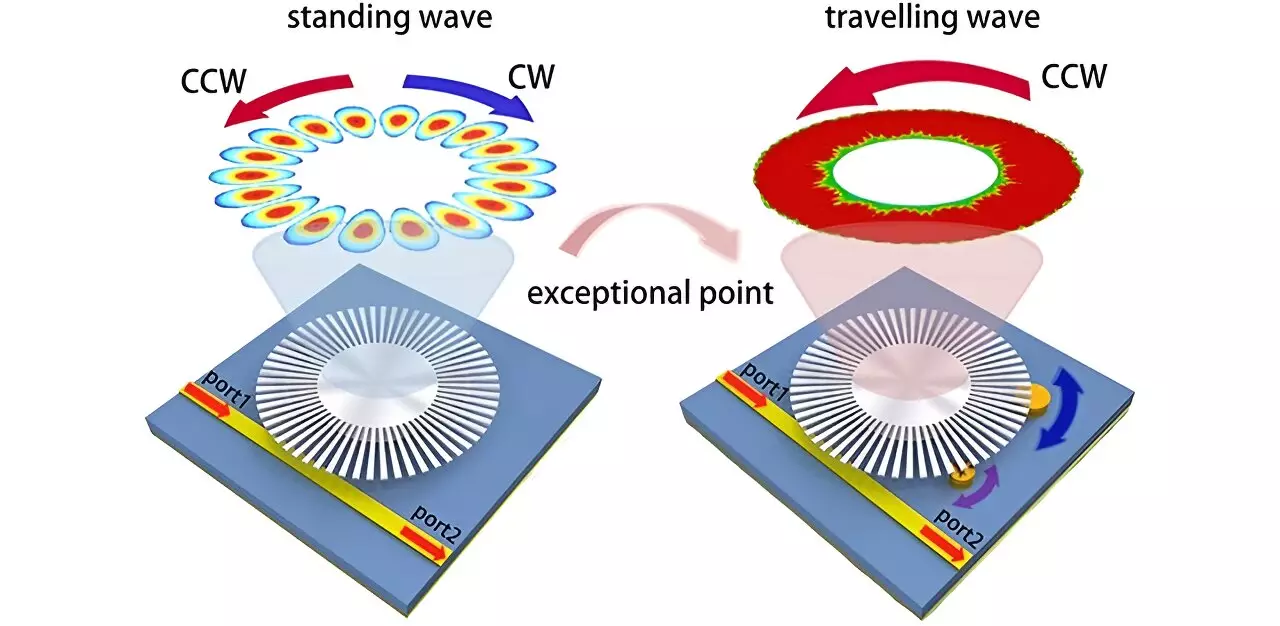Recent advancements in photonics and materials science have sparked a transformation in sensor technology, enabling unprecedented levels of detection and measurement capabilities. As researchers delve deeper into non-Hermitian physics, they are beginning to unravel new methods for manipulating light, fundamentally enhancing the performance of sensors. A significant study featured in Advanced Photonics Nexus highlights an exciting breakthrough in this field—a new sensor design that utilizes exceptional points (EPs) to achieve remarkable sensitivity levels.
Exceptional points are unique characteristics in optics where eigenvalues and eigenvectors coalesce, leading to dramatic increases in sensor sensitivity. Traditional sensor designs that leverage EPs, such as whispering gallery mode (WGM) microtoroids, have demonstrated notable advancements in sensitivity compared to conventional devices. Nevertheless, these traditional systems are not without their limitations. For instance, the fixed nature of their EPs post-manufacturing complicates necessary adjustments, and the narrow operational frequency ranges hinder their ability to detect minuscule particles.
The newly developed sensor presented in the recent study addresses these inadequacies through the use of spoof localized surface plasmon (LSP) resonators. Unlike traditional models, this innovative design grants dynamic reconfigurability and enhanced detection capabilities. By positioning the LSP resonator above a microstrip line and integrating two movable Rayleigh scatterers, researchers can effectively alter EP states across a broader frequency spectrum. This flexibility not only makes the sensor less susceptible to fabrication inconsistencies but also empowers it to identify exceptionally small particles more effectively.
Several pivotal features distinguish this new sensor design. The inclusion of adjustable Rayleigh scatterers permits real-time formation and reconfiguration of EPs, which significantly enhances both the precision and adaptability of the sensor. Furthermore, by confining electromagnetic fields to the resonator’s surface, the sensor demonstrates a remarkable increase in sensitivity to environmental perturbations. The incorporation of multipolar mode excitation expands the operational capacity of the device, allowing it to engage with various plasmonic resonance modes and broaden its detection capabilities.
The implications of this advancement are profound, particularly in contexts demanding high sensitivity. This technology can facilitate the detection of particles as minuscule as 0.001 times the wavelength of light—an achievement that sets the stage for new applications in both scientific research and industrial processes.
The frontier of sensor technology is evolving rapidly, fueled by breakthroughs in non-Hermitian physics and innovative materials. This novel sensor design, characterized by its reconfigurability, enhanced perturbation sensitivity, and multipolar capabilities, heralds a new era in detection technology. By overcoming previous limitations inherent to traditional EP-based systems, researchers are poised to explore and implement these sensors across a multitude of settings, unlocking new possibilities in both theoretical and applied realms. The future of sensor technology, driven by such innovations, promises to be not only highly sensitive but also remarkably versatile.

